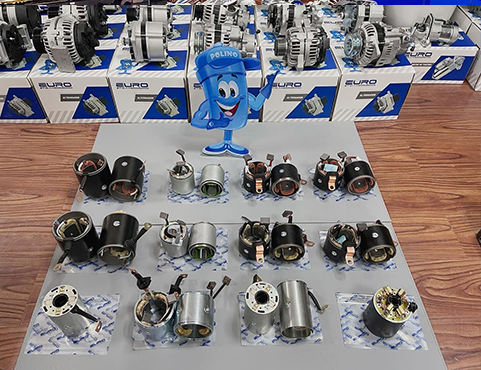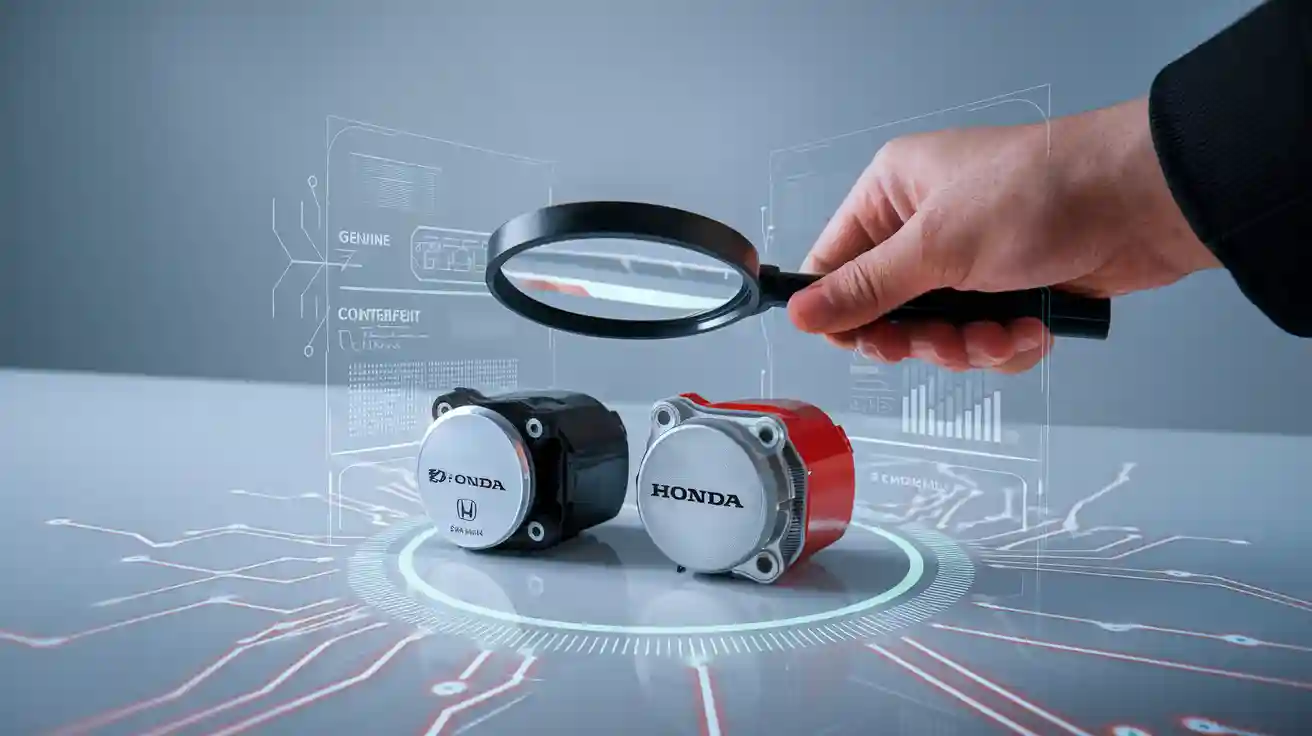
You can sometimes tell a fake Honda starter motor by examining the fine points. Your Honda was designed for genuine parts—it can really destroy your car and jeopardize your safety to use counterfeit components. A genuine Honda starter will have a snug fit and clear markings. Starter motors that are fake can be made to resemble, but they may not have some of the fine points. Save your car by taking a look at your starter before you install it. Reliable and efficient, only Honda starter motors have been specifically designed for your Honda vehicle.
Visual Checks
To identify a fake Honda starter, closely inspect it. In other words, careful vetting helps you keep fake parts out of your car. Here's how to do this and see if your starter is a genuine Honda part.
Honda Starter Motor Branding
Look at the branding on your starter. Real Honda starter motors have the Honda logos very distinct and crisp. The image on the logo should not be cutting or blurred. The Honda name should be embossed or engraved onto the metal. If you have an authentic part, compare the logo and markings.
Just check out that font and spacing in the Honda logo.
Ensure the marks appear in the true Honda fashion.
The text “Honda” should be in the same position as on an actual starter.
Tip: If the logo looks strange or is missing, it could be a counterfeit. Use a Honda comparison chart if you are not sure.
Serial Numbers and Barcodes
It has an individual serial sticker and a barcode indicating a unique identification number. These are the figures that you can use to checkwhether your starter is authentic. The serial number is visible on a sticker or stamped on the metal.
You can use your phone or a scanner to scan the barcode. The code is reportedly supposed to match up to Honda's records.
Input the serial number on Honda’s website, or have a Honda dealer look it up.
If the serial number is not present, difficult to read, or does not match, it's probably a fake.
Build Quality
Genuine Honda starter motors feel strong and well-made. When you hold a real starter, it feels heavy and smooth. Counterfeit starter motors often use cheap materials and are not made well.
Look for rough edges, uneven seams, or loose parts.
Check the electrical connections. Real starters have clean, tight terminals.
Make sure there are no missing parts, like dust covers or rubber seals, that should be on a real Honda starter motor.
A real starter will last longer and work better in your car. Counterfeit starter motors may break fast and hurt your Honda. Always compare your starter to a real part if you are not sure.
Warning: Do not ignore signs of bad build quality. Using a counterfeit starter can cause bigger problems for your car.
Packaging and Documentation
When you check a Honda starter, look at the box and papers. These things help you know if the part is real or fake.
Genuine Packaging Features
Real Honda starter motors come in strong, nice boxes. The Honda logo should be easy to see on the box. The box should not have any spelling mistakes or faded colors. The box should feel sturdy and keep the starter safe.
You will find a part number on the box. This number needs to match the number on your starter. If you see a sticker that looks new or does not match, be careful. Real boxes often have special seals that show if someone opened them. If the seal is broken or gone, the starter might not be real.
Tip: Look at pictures of real packaging on Honda’s website. If your box looks different, it could be fake.
Here is a simple checklist for real packaging:
Honda logo and branding are clear
Part number matches the starter
Tamper-evident seal is there
No spelling mistakes or bad printing

Manuals and Warranty Cards
A genuine Honda starter includes a manual and warranty registration card. The manual explains how you install the starter. The warranty card indicates that you have a genuine Honda product. If you don’t get these papers, you might start to question the authenticity of the starter.
The manual should be very legible and resemble Honda’s other user guides. The warranty card itself should have the Honda brand and the contact information on it. Sometimes, phony products come with phony papers. Search for bad printing or missing material.
Note: If you purchase a starter without a manual/warranty card, it may be a fake. Ask for these papers always before buying.
Seller Verification
Authorized Dealers
You can avoid fake Honda starter motors by using authorized dealers. These dealers work with Honda and follow strict rules. Buying from them means you get real parts and help. You can find a list of these dealers on Honda's website. Always check if the seller has a real address and a working phone number. If you go to a local dealer, ask them to prove the part is real.
Tip: Ask the dealer to show you the starter motor’s paperwork. Real dealers will give you documents and answer your questions.
Some suppliers, such as elecdura.com, customize according to the certification and regulatory standards required in your region - whether it is CE certification in Europe, E-Mark certification for automotive electronics, INMETRO certification in Brazil, or GCC certification in the Middle East. You can visit their website to learn more and get a better product.
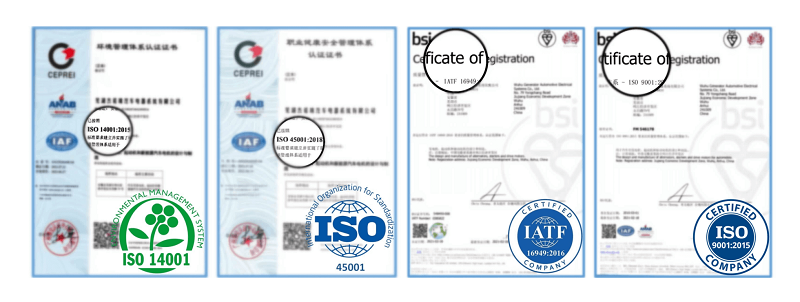
Online Seller Reputation
When you shop online, you should check the seller’s reputation. Many websites sell Honda parts, but not all are good. Start by searching the seller’s name with “forum” on Google. This helps you find real reviews from car owners. Forums like OdyClub have talks about different sellers. You can read what other buyers say and see if they got their parts.
Trusted websites include 247hondaparts.com and bernardiparts.com. Many people use these sites without trouble.
Some sellers, like hondapartsnow.com, work with Honda dealerships. You can check this on their website or ask customer service.
Look at the Better Business Bureau (BBB) website to see if the business is open. If the BBB listing is closed, be careful.
Stay away from websites with simple designs, no reviews, or little company info.
Note: People in forums sometimes ask for proof of new purchases. If you cannot find any, you may want to pick a different seller.
By checking both the dealer and the seller’s reputation, you keep yourself safe from counterfeit Honda starter motors. Always take time to look up information before you buy.
Price and Source Red Flags
Counterfeit Honda OEM Products
You might see a starter for sale at a price that looks like a bargain. Before you buy, check the price against what real Honda parts cost. Genuine Honda starter motors cost much more than most cheap listings. Here is a quick comparison:
Starter Type | Price Range (USD) | Notes on Quality and Reliability |
|---|---|---|
Genuine Honda Remanufactured OEM | Around $550 | Reliable and long-lasting. |
Around $1200 | Best quality, bought from Honda dealerships. | |
Aftermarket/Counterfeit | Cheap, but often unreliable and may fail quickly. |
If you spot a starter for $78, be cautious. Fake honda oem products are normally a lot cheaper than the genuine thing. These inexpensive starters can fail quickly and can also harm your car. Recent surveys and studies indicate that fake honda parts are an increasing issue. The Automotive Anti-Counterfeiting Council says counterfeit parts are costing the industry more than $3 billion annually. The quantity of fakes found inside the U.S. has nearly doubled over the past year. The rise of online shopping and social media makes it easier for counterfeit sellers to solicit customers.
Tip: Before you shop, compare prices. If the cost is significantly less than what Honda dealers charge, the starter is probably counterfeit.
Suspicious Listings
When you shop online, you need to watch for signs that a starter might be counterfeit. Many sellers use tricks to hide the truth. Here are the most common red flags:
No original Honda packaging or missing logos and part numbers.
Part numbers that do not match Honda records or are missing.
Sellers who cannot give you a part number.
Listings with blurry or missing photos of the starter or its box.
Prices that seem too good to be true.
Poor or no return policy.
Low seller ratings or reviews that mention fake or broken parts.
Sellers who do not answer questions about the starter's authenticity.
Websites without secure payment (no HTTPS).
You should avoid buying from unverified online platforms like eBay or Amazon if the seller cannot prove the starter is real. Counterfeit sellers often use these sites to reach more buyers. Always check the seller’s reviews and ask questions before you buy. If you see any of these warning signs, look for another source. It is usually more reliable to go directly to the OEM honda starter motor.
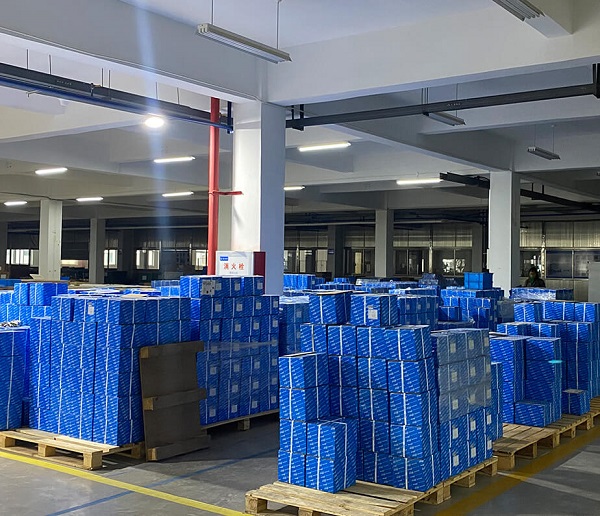
If You Suspect a Fake
Authenticity Steps
If you suspect that your Honda starter motor is counterfeit, you should take action as soon as possible. Begin by ceasing all plans for the installation of the part. Here's how you can tell if your starter is authentic:
Compare to an Authentic Part: Bring your starter to a true Honda starter motor. Scan for discrepancies with size, color and markings.
Check Serial Numbers: Visit Honda’s website or call a Honda dealer. Give them the serial number, and ask whether it matches their records.
Check Packing: Check the box, instruction manual and warranty card. Check for typos, lost seals or sloppy print.
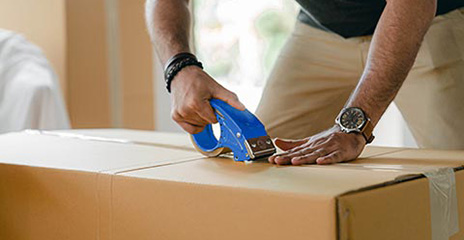
Ask the Seller: Email the seller to confirm its authenticity. Request receipts, dealer contact information or additional photos.
Take it to a Honda Dealer Take the starter to a Honda dealer. They can assist you in verifying whether the part is authentic.
Tip: Save all receipts, emails and photos you send. These can aid when you have to return the part or report a problem.
If you still feel unsure after these steps, do not use the starter motor. Using a fake part can damage your car and void your warranty.
Reporting Counterfeits
You can help stop the spread of fake Honda parts by reporting them. Here is how you can report a suspected counterfeit:
Contact Honda: Call Honda customer service or visit their official website. Use their contact form to report the fake part.
Report to Authorities: Tell your local consumer protection agency or the Better Business Bureau (BBB).
Alert the Seller’s Platform: If you bought the part online, report the seller to the website (like eBay or Amazon).
Share Your Experience: Post about your experience on car forums. This helps other Honda owners avoid the same problem.
Note: Reporting counterfeits protects you and other drivers. You help keep the market safe for everyone.
If you take these steps, you can protect your car and help others avoid fake Honda starter motors.
You can protect your Honda by following a few key steps:
Buy parts from trusted repair shops or local car care centers with good reputations.
Watch out for prices that seem too low.
Avoid buying from large online marketplaces with known counterfeit issues.
Trust your instincts if something feels off.
Report any suspected fake parts to the National Intellectual Property Rights Coordination Center.
Counterfeit Honda starter motors can damage your car and put your safety at risk. Always check every detail before you buy.
FAQ
How do you know if a Honda starter motor is counterfeit by its appearance only?
Look for the sharp Honda logos, clear markings and build quality. Counterfeit starters may feature blurred logos or rough, incomplete or missing sections. If possible, compare your starter to a legitimate one.
What to do if I have already included a fake starter engine?
Do not drive your car if you notice something is wrong. Go to a reputable mechanic or the Honda dealer. They can also test the starter and assist you in replacing it with an original equipment part.
Why is it dangerous to use a fake starter motor in your car?
An artificial starter can let go, as well as harm your power plant. You might lose your warranty. Your car may break down just when you need it.




